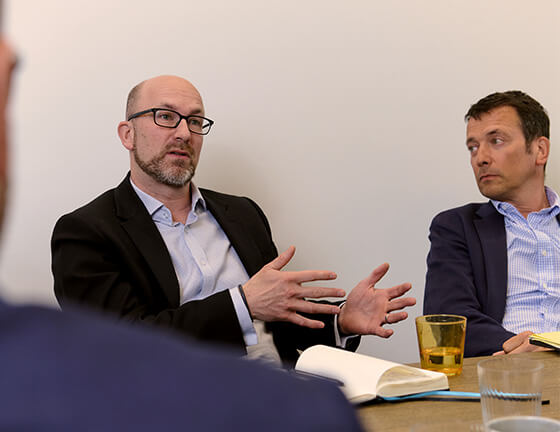“Mining companies are still grappling with the strategic legacy left by an era when planning was anchored in producing the highest volumes of ore at the lowest cost”, says Paul Templeton, Director, Metals & Mining at Cripps Leadership Advisors. “Chief executives and board members must therefore broaden their strategic outlook in response to recent critical shifts in the industry”.
Over the last five years, the need to navigate change has become normalised as leaders respond to technological disruption, generational shifts and the requirement for greater diversity of thinking. The environment is also shifting to focus less on CEOs directly and more on leadership teams in recognition that one leader alone rarely possesses all the skills and experience necessary to manage continually evolving environments. The mining industry will come under just as much scrutiny over gender diversity in its leadership as other sectors. According to the 2019 Hampton-Alexander Review, FTSE 100 mining giant Rio Tinto was also named as having the least diverse board in the blue-chip index – just one of its nine board members is a woman. In the FTSE 250, Hochschild Mining has one female board member and Ferrexpo has none – these kinds of statistics may deter investors from placing their funds with companies perceived as more perceptive and responsive to change, such as Antofagasta and Fresnillo whose board diversity is increasing.
More and more, the list of imperatives – from digital, to customer, to global challenges – require targeted and specific skillsets. This necessitates the bringing together of management teams from different backgrounds that represent the experience and understanding of the full value chain. This has crucially been shown to assist in identifying and managing risk and opportunities arising from an ever-changing landscape, ultimately helping to drive better decision-making.
Mining companies must re-position themselves to operate in a market characterised by constant disruption, volatility, rising stakeholder demands, a widening talent gap, dwindling access to key inputs such as energy and water, and a Chinese economy growing at under seven percent. In this new world order, miners should go beyond communicating the value that they currently bring to communities and will need to articulate what they stand for by developing differentiated business models designed to drive long-term value. As Jock O’Callaghan, Global Leader or Mining & Metals at PWC Australia puts it, “One thing is clear – mining requires far more than good financial performance in order to realise value in a sustainable manner”.
Solving this value conundrum mandates them to re-think their corporate strategy, strengthen their risk management, and find better ways to engage with stakeholders, push the boundaries on their digital transformation, attract truly diverse workforces, and avoid the capital project mistakes of the past. It also requires them to make technology a strategic priority by acknowledging its role as an enabler across every facet of their business. The advantages are obvious, say Belinda Booyens and Frik Snyman of Deloitte – “Dangerous, labour-intensive extraction processes will transition to safe, remote monitoring of equipment. Digitised processing will change the number of mining personnel required as well as the nature of their skillsets. Workforce mobility and flexibility will better align the timing of needed skills with the remuneration structure of those employees”.
Management teams are also, for the first time, approaching the reality that five generations will shortly be in the workplace. This will be culturally very challenging to navigate as leaders will need to consider the interests, expectations and motivations of colleagues from an ever more diverse and wide-ranging age group. In response, leaders must work to engage even harder with employees as an active and influential stakeholder. In many respects, the challenges this will create for leadership teams remains to be seen, as the fifth generation (5G) is yet to enter the workplace, but it will be those leaders and management teams that see this diversity as a strength that will ultimately seize the opportunities. Under the strapline ‘Disruptive technology arrives in mining, ready or not’, the Mining Journal alludes to the limited resources of mining companies as a result of decades of cost reduction and an ageing workforce – ‘the Digital Transformation’ can only make positive inroads here into streamlining staff numbers, agility and operating efficiency.
Key Challenges
We believe the following are critical factors to consider:
- Disruption and volatility make it imperative for mining companies to clarify how they plan to drive value into the future and how they intend to respond when prices inevitably drop again. To thrive into the future, mining companies will need to challenge the status quo by soliciting a diversity of opinions and taking the risk to do things differently.
- Technology and artificial intelligence (AI) will play a key role, not only in helping companies envision future scenarios, but in identifying risks at an enterprise level and transforming the supply chain. Moreover, advances in finance platforms, sensor technology, autonomous vehicles, cloud-based solutions, and analytics are paving the way for the design of a digital mine. Deloitte African energy and resources leader Andrew Lane, speaking in Mining Review, hails the move to use AI in mining to enable disaster prevention, through ‘predictive analytics’. This technological foresight will also enable well informed decisions about ‘how operations perform and what problems may arise, which in turn could increase investors’ interests in projects’.
- Understanding the needs and perceptions of people both inside and outside the organization will be critical. Companies must build a more diverse workplace and address succession planning, while fostering loyalty and retention among existing employees. At the same time companies must do more outreach to local communities, governments, and consumers so they can be more transparent and receptive.
These key choices should ultimately underpin and drive the strategy, partnerships and investment of any successful mining organisation with the desire to progress in this landscape of change.


